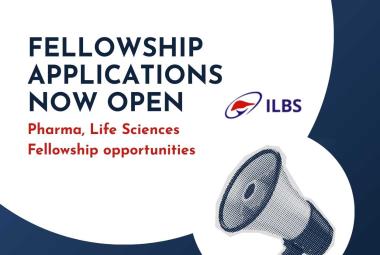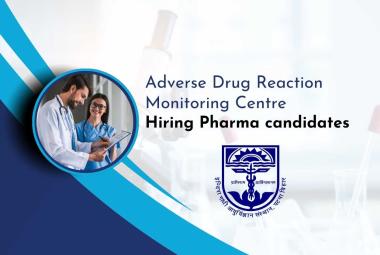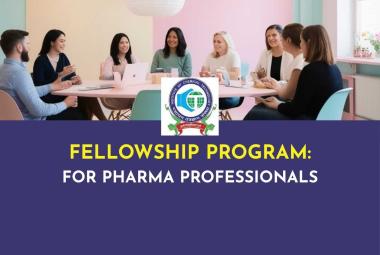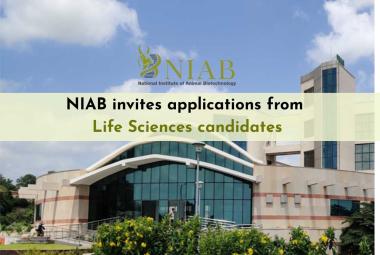{ DOWNLOAD AS PDF }
 ABOUT AUTHOR:
ABOUT AUTHOR:
Avlikant J. Dhawale*
RedCross Formulation, Ajanta Pharma, Aurangabad, Maharashtra
Department of Biochemistry, Gramin Science College (Swami Ramanand Tirth Marathwada University), Nanded, Maharashtra, India
*dhawale111@gmail.com
ABSTRACT:
Infertility is the inability of an animal or plant to reproduce by natural means. Many people in the world are facing the problem of infertility altimatlely the problem of saving their generations. Today, modern science chalanged and solved the problem of infertility by developing the technique of Test Tube Baby by using principle of in-vitro fertilization.
Dr. Subhas Mukherjee, first Asian who invented most easy and successful method of producing Test Tube Baby. In Culcutta, West Bengal, on 3rd October 1978, the team announced the birth of World's Second Test Tube baby named as 'Durga' (Kanupriya Agarwal). The announcement came 67 days after the birth of World's First Test Tube Baby named as 'Louise Brown in England by Physiologist Robert G. Edwards who awarded the Nobel Prize for such work in 2010. During his lifetime, Government of West Bengal didn't recognized his work. By the day to day insult from government Dr. Subhas Mukherjee committed to suicide.
[adsense:336x280:8701650588]
REFERENCE ID: PHARMATUTOR-ART-2286
|
PharmaTutor (ISSN: 2347 - 7881) Volume 2, Issue 12 How to cite this article: AJ Dhawale; Dr. Subhas Mukherjee and India’s First Test Tube Baby; PharmaTutor; 2014; 2(12); 99-106 |
INTRODUCTION
Dr.Mukherjee along with Sunit Mukherjee, a Cryobiologist, and Gynecologist Dr. SarojKanti Bhattacharya, worked on a method of in-vitro fertilization that was used successfully on patient with damaged fallopian tubes. On 3rd October 1978, the team announced the birth of the world's second test tube baby, in Calcutta. The announcement came 67 days after the birth of the first test-tube baby in England. Unlike his counterparts in England, Mukherjee had used gonadotropins for ovarian stimulation, transvaginalcolpotomy to harvest oocytes and cryopreservation of the human embryo.
To verify his claims, the Government set up a committee that denounced his achievements. Mukherjee was denied leave to write up a detailed report of his results and later to attend a meeting in Japan to discuss his work. As a final act of humiliation, he was transferred to Institute of Ophthalmology as professor of electrophysiology[1]. The insult may have been unbearable for Dr. Mukherjee as he committed suicide in 1981.
In 1997 Mukherjee's papers and handwritten notes on his technique were assessed by T. C. Anand Kumar - former Director of the Institute of Research in Reproduction, Mumbai. Dr. Kumar, who had played a key role in the birth of another test-tube baby in 1986, not only freed Dr. Mukherjee from charges of fraud but also wrote extensively about his pioneering feat. Mukherjee’s method of combining in-vitro fertilization and cryopreservation of human embryos is the currently preferred technique of medically assisted reproduction.[1][2] Today, more than 3 million test tube babies worldwide see the lights of day from Dr. Subhas Mukherjee's discovered method[2].
Dr. Subhas Mukherjee is still respected and remembered as someone who invented the most efficient process for the birth of test tube babies. In Sao Paulo, during the eve of 30 years completion of IVF, Brazilian Medical Society recognized and honored him for his incredible achievements[1].
[adsense:468x15:2204050025]
Some of his remarkable achievements are[2, 3]:
Used HMG for ovarian stimulation for IVF First to use transvaginal approach for ovum pick up
First to cyropreserve human embryos First to transfer embryo in a subsequent untreated cycle
HIS LIFE

1931, 16th January - Born in Hazaribag, Bihar, India[2].
1955 -Obtained M.B.B. S. from National Medical College, Calcutta. Stood First in Gynecology and also obtained Hemangini scholarship. Obtained B.Sc. (Hons.) in Physiology from Calcutta University [2]
1958 - PhD. From Calcutta University in Reproductive Physiology under the stewardship of Prof. SachchidanandaBanerjee[2].
1960 - Marriage with Namita and left for U.K under Colombo Plan to study Endocrine Physiology.
1967- PhD. from Edinburgh in Reproductive Endocrinology, Developed method for estimation of Hormone (LH). He worked at the Clinical Endocrinology Research Institute with Prof. John A. Loraine and obtained his Ph.D. In his research work a new method for assay of LH was found out. In those days no reliable method was available. The Technique depends on ovarian cholesterol depletion of intact immature rats pretreated with PMSG & HCG. He also worked at the Royal Infirmary, Edinburgh[3].
1967 to 1975- Lecturer, Reader and Professor of Physiology, NRS Medical College, Calcutta. Fundamental Research on the origin of HCG, which was postulated by Theodore Langhans as far back in 1870. He contradicted the view and established that it is of decidual origin rather than trophoblastic in origin. Hence he had to play with the embryos and early stage foetus, which helped him in creating Test Tube Babies. Fundamental work on the use of Testosterone in the management of female infertility. Outstanding hypotheses that stress is related to female infertility, which was presented at the International Conference on physiological sciences held in Paris in July 1977. Later workers are now confirming such relations[3].
1978, 17th August - Invited by the Rotary club of Belur to speak on Test Tube Baby.
1978, 3rd October - Birth of India's first Test Tube Baby was announced. His method was different from that followed by Steptoe & Edwards and it was also the World's first Test Tube Baby from frozen and thawed embryo. He did not undervalue the Indian Science and published his paper in Indian Journal of Cryogenics and presented his findings in the Indian Science Congress, in January 1979[3].
He discussed his experiment in the "Fifth International Congress on hormonal Steroids 1978" held at New Delhi in November - December 1978[6]. He also discussed the matter with Professor John Biggers of the Laboratory of Human Reproduction, Harvard Medical School,.USA and Prof. B. B. Sexena Professor of Bio-Chemistry and Endocrinology of the Cornell University Medical School in the USA and Professor Kenneth Ryan Professor of Gynecology of Havard. He was invited by the Benaras Hindu University to speak on the subject of embryo transfer. He also talked on the subject at Gauhati Medical College at the conference of the Gauhati Obstetrical and Gynecological Society - where he was presented with a "Manpatra" or a scroll of honour [2, 3].
1978, December - Govt. of West Bengal set up an Enquiry Committee which did not acknowledge his claim. As no physiological or biochemical techniques including DNA fingerprinting can distinguish between in - vivo and in - vitro fertilised normal baby, Dr. Subhas Mukherjee categorically stated to all concerned people that he cannot provide a sure proof for his work on IVF and ET. But he also asserted that if there was a genetic marker, through a surrogate, then proof will be obviously established. Even after these long years, as far is known, no country in the world has accepted a legal connotation of a test tube baby on the municipal birth certificate. Some professional bodies also heckled him in some meetings. He was denied Passport to go to Japan where he was invited to speak on IVF & ET. He was later transferred to the Eye dept. of Medical College, Calcutta in June 1981.
1980 - He had an heart attack and was transferred to RG Kar Medical College, Calcutta.
1981, 19th June- Dr. Subhas Mukherjee committed suicide.
HIS WORK
Dr. Subhas Mukherjee initially started working on pharmacological methods of inducing ovulation and spermatogenesis, first on animals and later on human subjects. He worked on the luteotropic effects of DHEA and testostorone in rats and humans. He developed bioassays and biochemical methods to demonstrate the presence of a substance similar to HCG in the non-pregnant human endometrium and speculated on its possible role in fetal development. His investigations into the causes of the acyclicity of the menstrual cycle in arnenorrhoric women led to insights about polyeystic ovaries. He was also among the first to link emotional stress with polycystic disease[3].
Mukherjee along with Prof. Sunit Mukherjee, a cryobiologist, and a gynecologist Dr. SarojKanti Bhattacharya, worked on a method of in vitro fertilization that was used successfully on a patient with damaged fallopian tubes. On 3 October 1978, the team announced the birth of the world's second test tube baby in Calcutta. The announcement came sixty seven days after R. G. Edwards and Patric Steptoe had announced the birth of first test tube baby in England. Unlike the counterparts in England, Mukherjee had used gonadotropins for ovarian stimulation, transvaginalcolpotomy to harvest ooeytes and cryopreservatinn of the human embryo.
Mukherjee presented his findings at the International Congress on Hormonal Steroids at New Delhi in 1978 and at the Indian Science Congress at Hyderabad in 1979.
In 1997, Mukherjee's papers and handwritten notes on his technique were assessed by Dr. T.C. Anand Kumar, formerly Director of the institute of Research in Reproduction, Mumbai. Dr. Kumar, who had played a key role in the birth of another test tube baby horn in Mumbai (1986) wrote extensively about his pioneering feat. Mukherjee's method of combining in vitro fertilization and cryopreservation of human embryos is the currently preferred technique of medically assisted reproduction[3, 4].
Dr. Subhas Mukherjee's salient achievements are:
Dr. Mukherjee was the first to successfully use human menopausal gonadotrophins (hMG) for ovulation stimulation in an IVF programme to ensure the availability of multiple ovarian follicles for aspiration. hMG is now routinely used all over the world in IVcprogrammes and the credit for its first time use has been given to Howard Jones in USA, who discovered it after three years of Dr. Mukherjee. [4]
Dr. Mukherjee was the first to approach the ovaries via the vaginal route by posterior colpotomy. The transvaginal route is the most widely used approach to the ovaries for follicular aspiration under ultrasonographic guidance.
Dr. Mukherjee was the first person to have succeeded in freezing and thawing human embryos using a reagent (DMSO) which is now very commonly used for freezing embryos. Though, the Australian team headed by Trounson is credited for being the first to make this discovery in the 1980s.
Dr. Mukherjee was the first to have aspirated oocytes in a stimulated cycle, fertilize them invitro and freeze the embryos in that cycle, recover and thaw and transfer them into the uterus during the following natural cycle. This Procedure is been followed by several other clinics successfully now[4,5].
NOW YOU CAN ALSO PUBLISH YOUR ARTICLE ONLINE.
SUBMIT YOUR ARTICLE/PROJECT AT editor-in-chief@pharmatutor.org
Subscribe to Pharmatutor Alerts by Email
FIND OUT MORE ARTICLES AT OUR DATABASE
MUKHERJEE'S TECHNIQUE
The brief description given by Mukherjee in his letter dated 19 October 1978 to the Director of Health Services, Government of West Bengal, the reports he gave over the television interviews and reported in the lay press describe how Mukherjee carried out the procedure of in vitro fertilization[4].
Collection and evaluation of spermatozoa
Durga’s father was found to have a low sperm count, according to Mukerjee who obviously was aware of the diagnostics value of semenograms as evidence by the papers he represented much before the WHO laboratory manual for the examination of human semen came out in 1980. Mukerjee also knew that such a condition can he effectively treated with gonadotropins. Gonadotropins therapy is now routinely used to treat men with low sperm counts[4].
Ovarian stimulation
In his report dated 19-10-1978 to the DHS, Mukherjee stated that he had treated Mrs Agarwal with hMG 76 ampoules given twice a day an don alternate days and starting from day 3 to day 9 of the cycle. She was given 6000 I.U. of hCG on day 11 of the cycle and she was subjected to oocyte aspiration some 48h later. Mukherjee was able to aspirate 5 folicle by this method[5]. In todays context this ovarian protocol will not sound outrageous because controlled ovarian hyper stimulation is the standard procedure for all women subjected to IVF. However, until 1980 december ‘conventional wisdom’in Britain, Australia and USA dictated that stimulated cycles were unsuitable for oocyte collection and therefore oocyte aspiration was restricted to natural cycles. It was only in 1981 that other scientists resorted to ovarian stimulation. The Australians who were the next to announce the birth of IVS babies, began to use clomiphencitrate for ovarian stimulation in 1981. the Norfolk group in the USA, who were the third to report the occurrence of an IVF baby, began to use with hMC and hCG in their IVF programme with success in 1982. It is noteworthy that Mukherjee was far ahead of his time in successfully using an ovarian stimulation protocol before anyone else in the world had thought of doing so [5, 6].
Ovum pick-up for IVF was a problem during the early days. The British team had used a laparascope to harvest oocytes. The advent of ultrasonography later on opened out a new avenue to aspirate oocytes transvasicaly under ultrasound guidance by making apercutaneous insertion of a long needle traversing the abdominal wall, the urinary bladder and finally the ovarian follicle [5, 6].
The advent of the transvaginal probe has made it possible to collect oocytes per vaginum and this is the standard procedure used now.
Mukherjee’s originality was that he was able to access the ovaries by a very simple operation on the wall of the vagina. Stimulated ovaries enlarge and drop down towards the Pouch of Douglas. A small incision on the posterior wall of the vagina would allow the ovaries to fall through this opening. This reminds one of how a biologist gains rapid access to the ovaries of rats by a very simple lateral, abdominal incision. The entire procedure was accomplished within a couple of minutes. Mukherjee’s research experience with rats and humans had helped him take this very simple and original approach of gaining access to ovaries by posterior colpotomy.
One wonders why this very simple approach did not gain popularity. After all today oocytes are aspirated per vaginum under ultrasound guidance[6].
In vitro culture techniques
The freshly aspirated oocytes were incubated for 4 hours before inseminating them with the husband’s semen that was processed in protein-supplemented Tyrodes solution. This is exactly what is done even to this day in almost all IVF programmes to accomplish in vitro oocyte maturation; processing semen is essential for ‘sperm activation’. The oocytes were exposed to processed semen for a period of 24 hours and later incubated for another 72 hours in a mixture of cervical-uterine fluids. The use of such fluid is not described elsewhere. However, the use of a synthetic fluid, similar to that found in the human fallopian tube, has been described to be useful for in vitro embryo culture procedures[7].
The methods of in vitro fertilization and embryo growth are described in detail in Mukherjee’s letter to the DHSdated 19 October 1978 as well as in a publication in an obscure journal. Mukherjee’s stated, It also appears that for cryogenic preservation of embryos with a relatively larger number of blastomeres (more than 8 cells) may be preferable[7].
Few pre-ovulatory human oocytes collected from a married by surgery were fertilized with spermatozoa from the husbands and cleaved in vitro and subsequently frozen slowly to about -196oC after stepwise treatment with dimethyl sulfoxide. One such frozen embryo was subsequently thawed slowly and when transferred into the uterus of the woman apparently resulted in the production of a clinically normal female baby after normal period of gestation.
Here is clear published evidence of how exactly Mukherjee carried out his version of in vitro fertilization and embryo transfer.
Cryopreservation of embryos from mice, rabbits, sheep goats and was reported between 1971 and 1979. The first report on the successful cryopreservation of four to eight cells human embryos appeared as late as 1981 and Trounson and Mohr reported the first successful clinical outcome of the transfer of thawed human embryos in 1983. A WHO report states ‘embryo cryopreservation has now become a routine adjunct to IVF procedures, and various methods of freezing are employed.[8] The method that has yielded the best results in terms of simplicity, efficiency and reproducibility is one that involves freezing of one to three-day-old embryos (one to eight cells) in a controlled biological chamber that cools the embryos to sub-zero temperatures in the presence of a cryoprotectant 1,2 propanediol. Other cryoprotectants that are used are dimethyl sulfoxide (the same cryoprotectant was used by Mukherjee) and glycerol[9].
It may be noted that Subhas Mukerji reported the successful cryopreservation of a eight cell embryo, storing it for 53 days, thawing and replacing it into the mother’s womb, resulting in a successful and live birth as early as 1978- a full five years before anyone else had done so. This small publication of Mukherjee in 1978 clearly shows that Mukerji was on the right line of thinking much before anyone else had demonstrated the successful outcome of a pregnancy following the transfer of a 8-cell frozen-thawed embryo into human subjects transferring 8-cell cryopreserved embryos.(Current Science, Vol .72. No. 7, 10th april 1997)[10].
Kanupriya Agarwal: Life from Petri Dish

"I was frozen before I was born —what can you expect of a person like me? This is a standing joke between myfamily and me. I always knew I was a technological innovation. But the recognition of being the first test tube baby that cleared Dr Subhas Mukherjee’s name —the person who brought me into this world —came eight years ago, around my 25th birthday. The sole photo album of my childhood has the doctor’s photographs, he and his wife with my parents and me. Sadly, I have no memory of him. He was forced by circumstances to take his own life when I was not even three years old, but his wife continued visiting us. She called me her husband’s only child [11].
Today, people say I am brave to talk about it, but it’s so easy to voice my opinion, as compared to the ordeal my parents and Dr Mukherjee went through. They were the brave ones, their lives were scarred by the controversy, that followed my birth. They were called names, and Dr Mukherjee was ostracised by the scientific community and the West Bengal government. I was sent away to my grandparents’ house to avoid the scrutiny for the first few months after my birth. There I was christened Durga (my pet name), since I was born on October 3, the first day of the Durga Puja in 1978. My life was normal, being the first test-tube baby was incidental. I grew up in a jovial Marwari neighbourhood in Kolkata, went to La Martiniere’s School, and attended a girls’ college.
But I was a curious child, bursting with questions. My parents have always been truthful to me, and never glossed over the details of my birth. I was about seven years old when my father first told me that Ma had difficulty in conceiving, so we had to take some help from Dr Mukherjee. I learnt how Dr Mukherjee worked out of a small lab at his home, and my parents went there for treatment. It was simply told and I came to accept it as a fact, as did my friends. I never thought being born in a test tube was anything but normal, because there was nothing extraordinary about my life otherwise. My parents, on the other hand, have never quite recovered from the trauma they faced after my birth. They still shy away from media attention.
I was taken on a tour of the clinic that Dr Sunit Mukherjee (the cryobiologist in Dr Mukherjee’s team) had set up in Dr Subhas Mukherjee’s honour, when I was less than 10 years old. I saw the instruments, and that was where the joke about me being frozen before my birth was first made, by my father. Strangely, I still don’t know how much Ma and Baba had to pay to have me.
I was about 13 years old when journalists started coming to our house again. By then the controversy surrounding Dr Mukherjee was well-known. My father hated the idea of people photographing me. My friends were appointed my bodyguards. Together we would discuss the technology behind me. We were kids, we did not really understand the trauma behind it. I am told I always wanted to be a doctor when I was young, and then a psychologist. I suppose that’s where the questions came from [11].
When I was about 20-22 years old, Dr T C Anand Kumar, who was widely celebrated for having delivered the first test tube baby in India eight years after my birth, started visiting our home. Dr Sunit Mukherjee had contacted him, and given him my doctor’s old notes. Dr Kumar was one of the bravest people I know. He opposed Dr. Mukherjee vehemently, yet he was the one who painstakingly went through those notes, and accepted that he had been wrong. He convinced the Indian Council of Medical Research, and commemorated Dr. Mukherjee on my 25th birthday.
I did my MBA from Symbiosis University, Puna and got a job with Perfetti Van Melleas a marketing personnel. Around then, Dr Mukherjee was given the recognition he deserved years before. My colleagues bombarded me with questions, about why I had concealed my identity. I always tell people, that I don’t walk up to you and tell you my favouritecolour because it won’t make a difference to your life. The story of my birth is something like that. I got married five years ago, and though I am yet to have children of my own, I’ll tell them my story when they come. One of my closest friends just gave birth to a test-tube baby, and it made me very happy. I am not qualified to be a champion of IVF. I am neither a doctor, nor a psychologist, but I believe that I need to speak up for it, if only to clear a good man’s name.” [11].
CONCLUSION
Dr. Subhas Mukherjee, the architect of India's first and world's second test-tube-baby, dedicated his whole life to his work. But the very sad thing is that, government did'nt recognised his achievement and denounced his claim. He was denied his passport to go to Kyoto, Japan to present his paper on in-vitro fertilization. Committee declared that, "Everything that Dr. Mukherjee's claim is bogus." He was then transfered to hospital were he suffered a heart attack. Government fail to justice him during his lifetime. Finaly he end his life by committing suicide. In 2003, after 22 years from death of Dr. Mukherjee, committee accepted his claim and history re-written. Kanupriya said that, "I feel justice has been done to my scientific dad."
REFERENCES
1. drsubhasmukhopadhyay.blogspot.in/2008/09/great-scientist-drsubhas-mukhopadhyay.html?m=1
2. drsubhasmukherjee.com/
3. Test tube triumph & tragedy - Nobel for UK scientist stirs memory of a Bengal doctor". The Telegraph (Calcutta). 5 October 2010. Retrieved 4 March 2012.
4. "Medicine Nobel for IVF pioneer". Hindustan Times. 4 October 2010. Retrieved 4 March 2012.
5. "Honour fails to cheer doctor’s wife". The Times of India. 14 October 2003. Retrieved 4 March 2012.Narayan, Pushpa (5 October 2010). "Indian
6. Bidyut Tantra; "The Great Scientist Dr. SubhashMukhopadhyay"; 11 February 2008 ; B.C.D.A Collage of Pharmacy & Technology
7. Subhas Mukherjee; Histogenesis of Peripheral Cyto-Trophoblastic Cell Presented at the 62nd Indian Science Congress – 1975
8. Laaxmi Software Tiruchengode HISTORY OF SCIENTIST – AN ARTICLE
9. Dr. Subhas Mukherjee; Extragonadal Effects on Human Chorionic Gonadotrophins; 59th Indian Science congress, 1972
10. T.C. Anand Kumar; Architect Of India's First Test Tube Baby : Dr. Subhas Mukherjee (16 Jan 1931 to 19 Jul 1981); page no. 526-531 ; Current Science vol. 72.No.7, 10 April 1997
11. Pritha Chatterjee; I Thought Being Born In A Test Tube Was Normal; Indian Express; 18 Sept 2011;http://archive.indianexpress.com/news/i-thought-being-born-in-a-test-tube-was-normal/848077/
NOW YOU CAN ALSO PUBLISH YOUR ARTICLE ONLINE.
SUBMIT YOUR ARTICLE/PROJECT AT editor-in-chief@pharmatutor.org
Subscribe to Pharmatutor Alerts by Email
FIND OUT MORE ARTICLES AT OUR DATABASE









